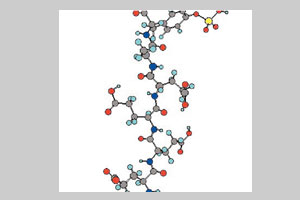Once the stomach’s work is done, the chyme is poured into the duodenum in small portions through another valve or sphincter, the pylorus. In this part, the mix is combined with the pancreatic juices, leaving a finer mass. Its moves towards the middle part of the intestine, known as jejunum, where it decomposes even further.When the road ends, in the ileum, the intestinal wall villi absorb the nutrients and take them to the blood, through where they will be spread to the different parts of the body according to their needs. From the ileum, the rest of undigested chyme pass on to the first part of the large intestine, which is the next-to-last stop of the digestive tube.Since the job of taking advantage of the nutrients is almost done, all the large intestine has left to do is absorb water from the undigested matter and form solid waste, known as feces.
Biliary and pancreatic liquids and enzymes
Chyme, after entering the duodenum (first part of the small intestine) from the stomach, is neutralized by the alkaline secretions of the pancreas, leaving it with the necessary acidity for the enzymes of the small intestine to act upon it. Bile, which is a liquid previously stored in the gall bladder (beneath the liver), is driven by the hepatic duct towards the small intestine.
In this place, one of its components, biliary (bile) salts help split fats into small portions for the pancreatic enzymes to act upon them.It must be pointed out that these salts breakdown into biliary acids, which are reabsorbed in the intestine and transported to the liver where they turned into biliary salts again.In the duodenum, chyme is also mixed with pancreatic juice that contains several digestive enzymes, like pancreatic amilase, which breaks down the starches into maltose (a disaccharide sugar). It also contains lipase, which splits the triglycerides into fatty acids and glycerin or glycerol.
Intestinal work
As chyme advances through the small intestine, other secretions are added, like intestinal or enteric juice, that contain diverse enzymes that breakdown the nutrients’ molecules. One of the most important ones are proteases, that act on proteins, one of the most complex nutrients which need a more laborious digestion.
At the same time, the other already broken-down nutrients (carbohydrates, fats, vitamins and mineral salts) that have reached an adequate size and are useful to the body go through the intestinal wall and pass on to the blood. This process, known as absorption, is produced at the jejunum and ileum because the intestinal walls are very withdrawn and have villi to increase the exchange surface to better assimilate the greatest amount of nutrients. Each villus internally has a network of blood and lymphatic capillaries that gather those nutrients and incorporate them into the bloodstream, from where they are spread to the different organs.
This absorption takes place slowly and only the non-digestible materials and water are left. These last ones pass on to the large intestine, where there are several microorganisms (mainly harmless bacteria) that make up the intestinal flora and attack fiber’s polysaccharides. Sugars are released in this process, which are fermented by other bacteria, producing small amounts of organic acids, which are compressed along with water and residues to form feces.








 Muere Evita
Muere Evita